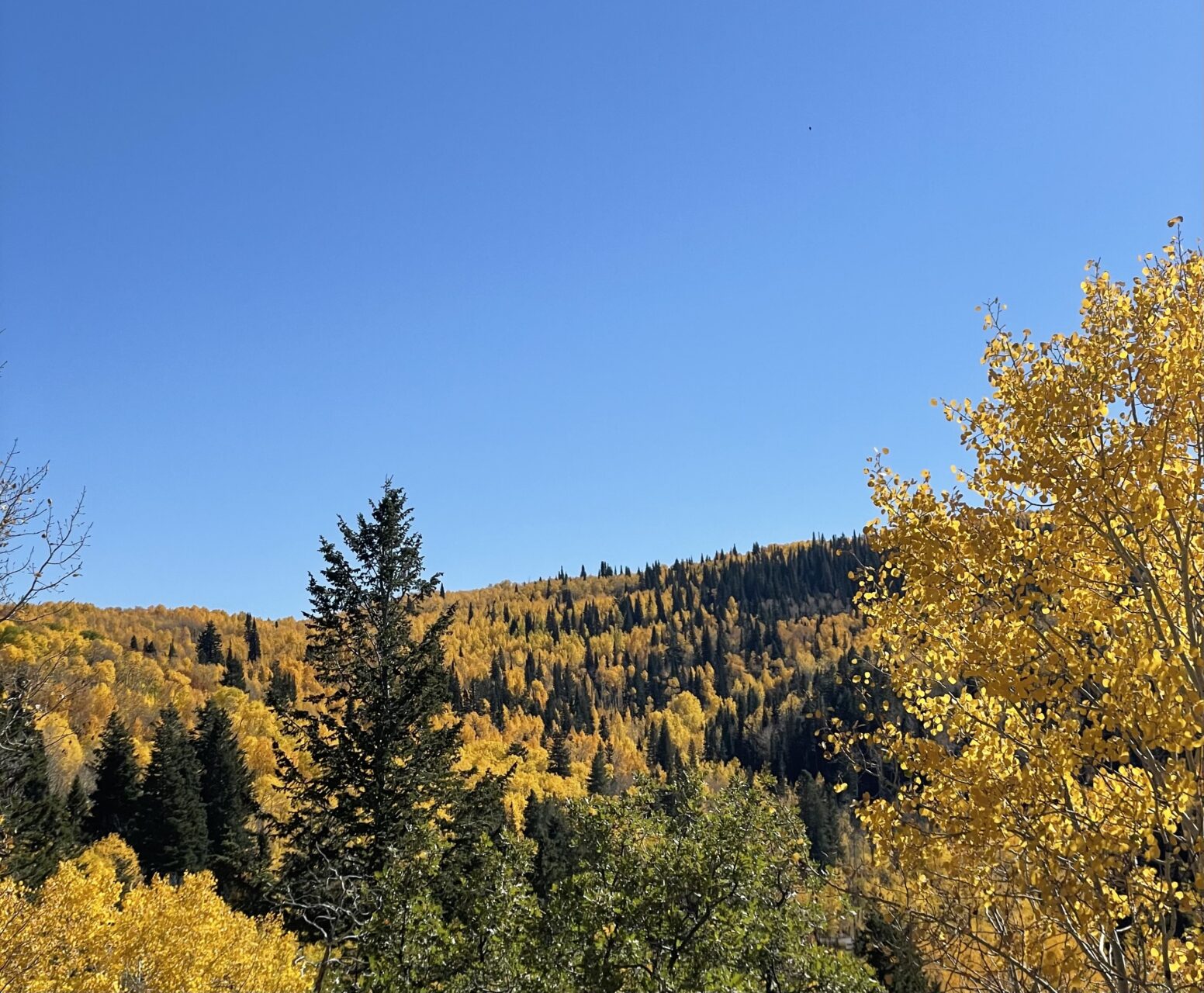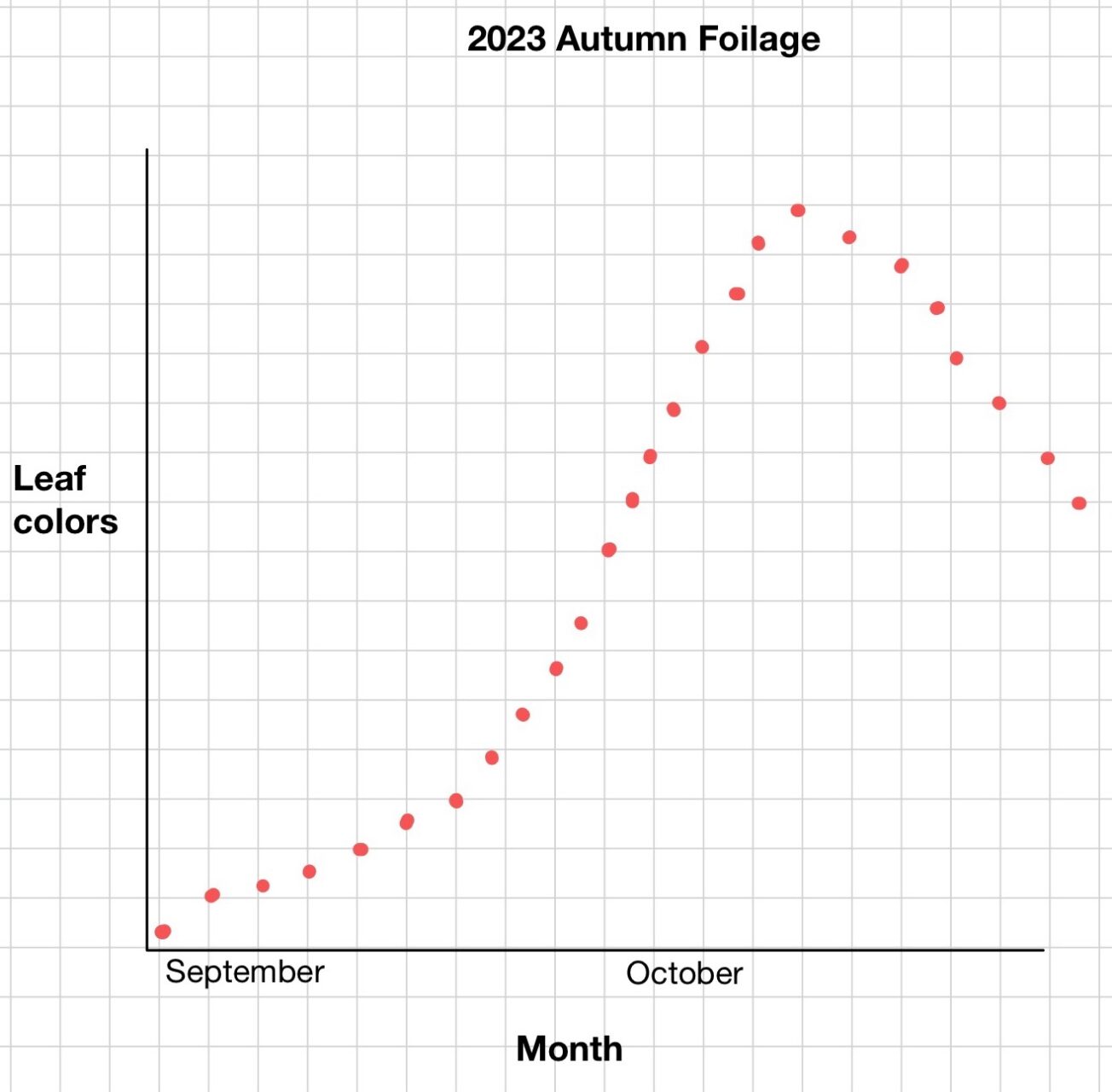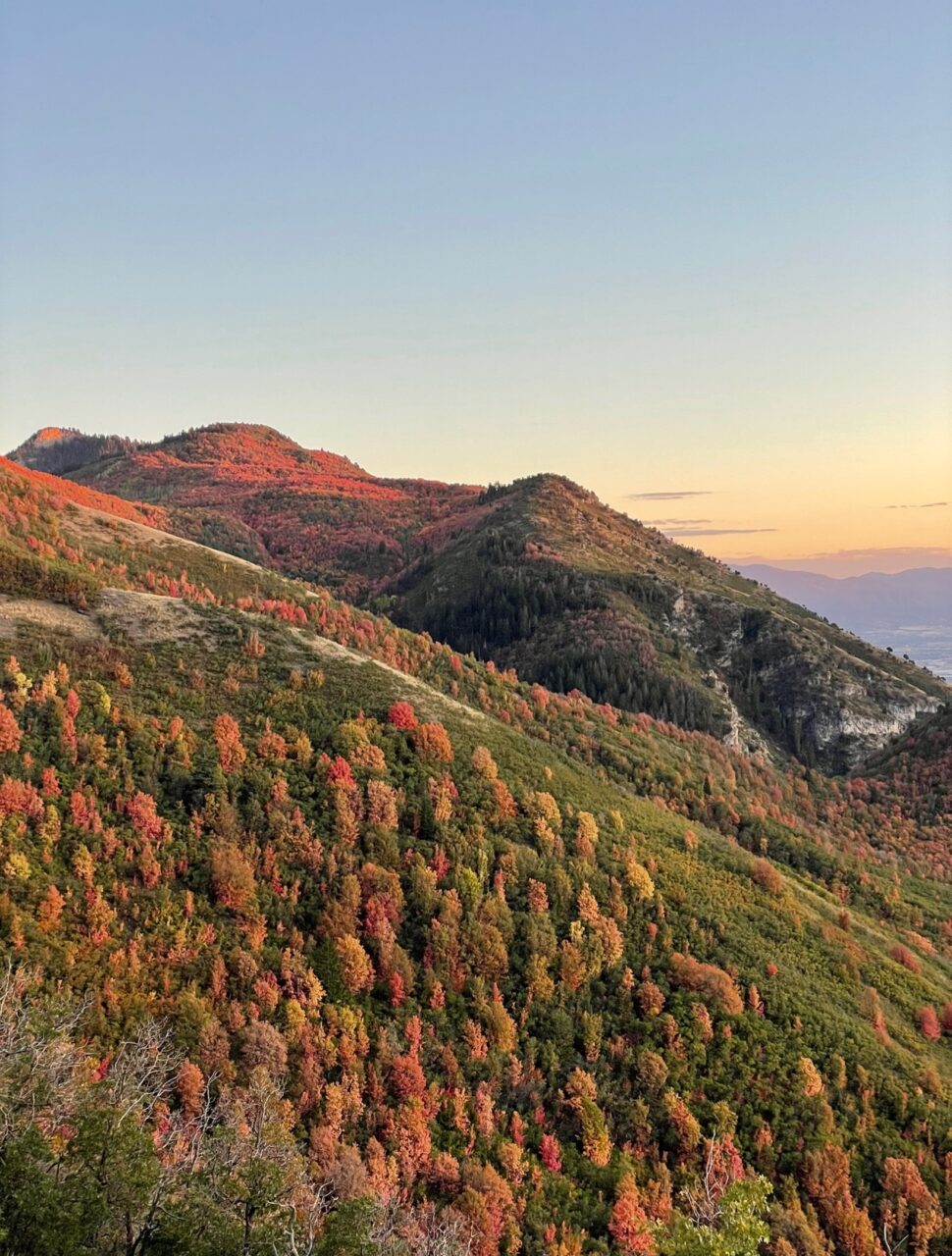
Temperatures are cooling down, and hints of autumn colors can be seen in the mountains.

Experts predict Utah’s peak foliage will begin in October and continue until the end of the month. The Farmers’ Almanac has been tracking foliage since 1818 and reports the brightest colors between Oct. 5 and Oct. 21.
After record-breaking snow and a wet summer, the U.S. Drought Monitor reported 11% of the state in severe drought, compared to 61% last year. This improvement is likely to result in a longer season of fall colors.
Healthy trees mean leaves will stay on for longer, and colors will be more vibrant, according to the U.S. Department of Agriculture’s Forest Service.
Utah’s stunning landscape attracts tourists from all over to witness the changing colors. Many students said they go on scenic drives, walks or hikes to enjoy the foliage.
“Probably my favorite thing to do is drive up the Alpine Loop and look at the trees. With the mountains and the leaves, it’s beautiful,” said BYU student Adam Johnson from Pleasant Grove.
BYU student Isabelle Soward from Saratoga Springs said she loves to drive and hike around the Alpine Loop.
“There’s a really cool hike up there called Cascade Springs,” she said. “It’s just kind of a walk about, there’s little springs everywhere with the fall colors, it’s beautiful.”

Boston Sharp, a BYU student from Bountiful, also enjoys scenic drives to take in the autumn beauty.
“Looking out on something where there’s a bunch of trees and they are all changing colors. It’s stuff that you couldn’t fit in a picture or painting even if you tried,” Sharp said.
Temperature, rainfall and food supply are some of the many factors that may influence the biochemical process of changing leaf colors, according to the Forest Service.
Longer nights slow chlorophyll production in leaves, exposing the natural pigments. The spectacular colors represent early stages of decomposition before the leaves fall and recycle back into the earth, the Forest Service said.
Different types of trees have different pigments with either carotenoids or anthocyanin, according to the Forest Service. The pigment depends on the type of tree, explaining the wide array of fall colors.
Utahns can expect leaves in the mountains and canyons to color and fade a few weeks ahead of trees in the valleys, according to the Forest Service.




